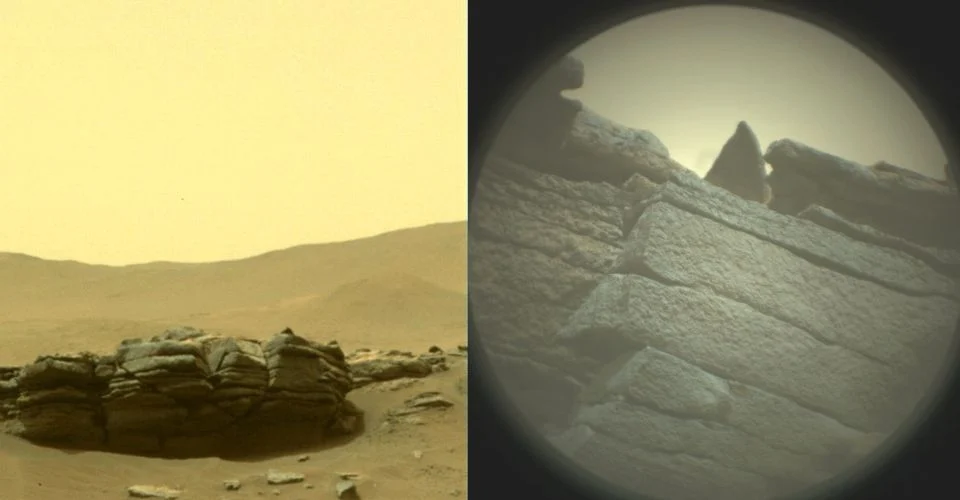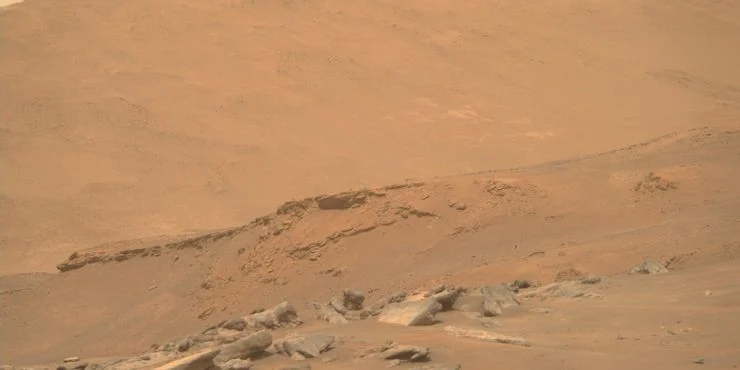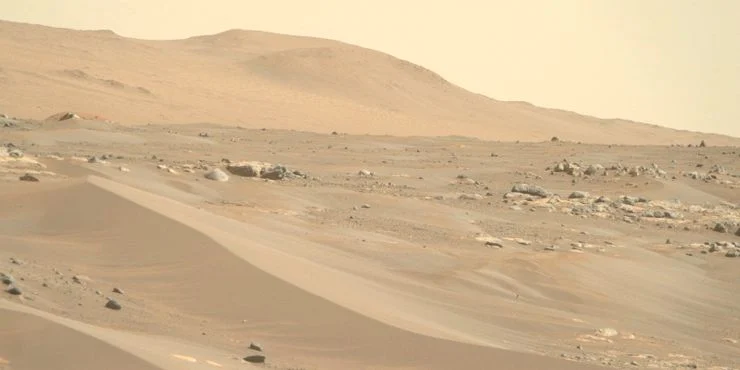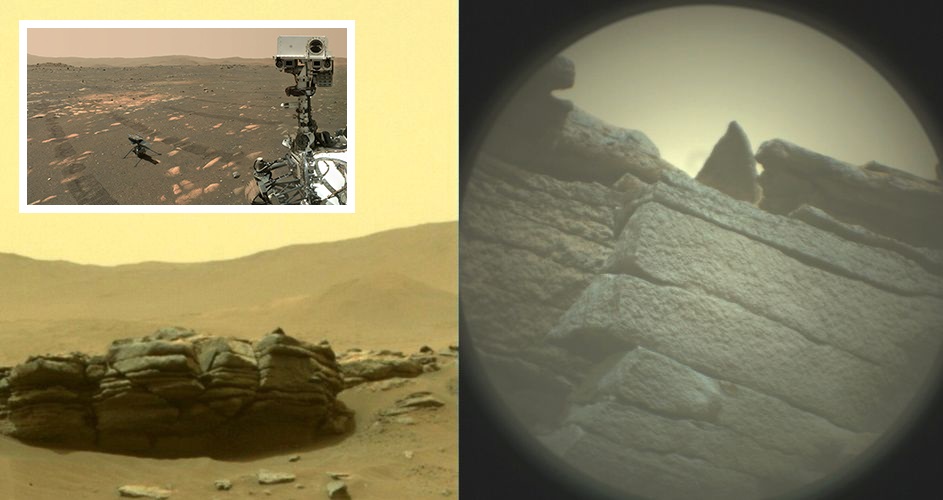The Mars rovers have discovered Martian rocks that resemble frogs, worms, and other animals. Perseverance has now come upon one that looks suspiciously like an old wall. On paper, Mars seems to be a pretty dull planet to visit.
All is a barren wasteland of rocks, dust, and sand… that is about it. There is no running water, very little oxygen, and no signs of life at all. It is a horrible place compared to life on Earth.
That is not to suggest Mars is not an aesthetically appealing planet. Despite the severe conditions on Mars, rovers have frequently captured breathtaking images of the planet.
Perseverance and Curiosity rovers often transmit photographs of Mars’ breathtaking vistas, massive mountains, wide dunes, and bizarre rock formations. Perseverance just discovered a cluster of rocks that resembled a wrecked spacecraft!

Perseverance has returned with another collection of Mars photographs for us to gaze at, ensuring that there is never a boring moment in the realm of Mars exploration. Due to some lodged debris, the rover’s rock gathering mission is now on hold, so it is getting to spend some additional time examining the region around it.
Among the new photographs, the one seen above strikes out as especially intriguing. Perseverance has recorded a close-up photo of Martian rock tens of thousands of times. This one, on the other hand, is special in that it resembles an old wall nearly exactly.
The rock has definite lines going through it that appear suspiciously like bricks stacked on top of each other. It nearly looks like wall constructions built on Earth by the Inca Empire in the 1400s, as several Twitter users have pointed out.
Perseverance was drawn to a bizarre Martian ‘wall,’ but it was not the only rock that drew his interest. Another group of rocks was discovered dispersed over the sandy surface by the rover.
They seem little in comparison to the gigantic dune behind them, but a closer examination reveals additional intriguing characteristics. Below the dune, a tiny line of rocks runs along the top of a hill.

Larger rock fragments scattered over the ground in no particular order or design may be found much deeper down.
It is always astonishing how a planet so desolate and harmful to life can find ways to be a wonder of beauty. Dunes that dazzle? Check. Is not it a mesmerizing golden sky? Yep. Rocks that can take on the appearance of anything from a frog to a wall? Yes, of course! Humans will have to wait a few more years to see these things for themselves, but when they do, it will be well worth the wait.
How Cold Or How Hot Is Mars? Mars’ Temperatures: What You Need to Know
The dry, dusty surface of Mars gives the impression that it is rather hot, but is it really so hot? Mars is one of the objects in space that has always piqued my interest. It is often mentioned in science fiction, is researched by astronomers and scientists on a regular basis, and is the planet that most people are acquainted with beyond Earth.
But why is that? Why does Mars, out of all the other planets in the Solar System, get so much attention? This is due to a number of factors. To begin with, its climate is the most comparable to that of Earth when compared to Saturn, Jupiter, and other planets.
It has a solid surface, a (thin) atmosphere, and is one of Earth’s nearest neighbors. Mars has a long and intriguing past as well. Evidence reveals that the world was once awash with water. That implies it is feasible that ancient life existed on Mars, something scientists have been attempting to confirm for years.
Many individuals dream of a day when future humanity would dwell on Mars as a result of their infatuation with the planet. As thrilling as it sounds in principle, human settlement on Mars is fraught with difficulties, one of the most significant of which is the planet’s surface temperature.
Mars is quite chilly, despite its fiery look. Mars has an average surface temperature of roughly -81°F, according to the National Weather Service. This may drop to -220°F in the winter and rise to about 70°F in the summer in Mars’ lower latitudes. That is clearly considerably colder than Earth, and it is not a favorable environment for people to live in.
Why Is Mars So Colder Than Earth?
There are a number of causes for Mars’s frigid temperatures. To begin with, Mars is 50 million miles distant from the Sun, but Earth is just 50 million miles away. Mars is 148.49 million miles distant from Earth, which is 91.863 million miles away from the Sun. Because of its greater distance from Earth, Mars receives far less heat and light.
And Mars’ poor atmosphere does not hang on to the little heat/light it does get very effectively. When heat from the Sun reaches Earth, it is trapped in the thick atmosphere of our planet and cannot escape.
The ‘greenhouse effect,’ as it is popularly called, is one of the primary reasons why life survives on Earth in the first place. The atmosphere of Mars is about 100 times thinner than that of Earth.

The planet still gets some heat from the Sun, but it soon dissipates and is insufficient to keep the world warm. “Standing on the Martian equator at midday, it would feel like summer at your feet, but winter near your head,” NASA adds.
This is one of those times when the phrase “do not judge a book by its cover” comes to mind. Given how similar the Martian terrain seems to Earth’s hot and arid deserts, it is simple to presume it has comparable scorching temperatures. But nothing could be farther from the truth. Along with a dearth of oxygen and a lack of flowing water, the Red Planet faces the possibility of dangerously frigid temperatures.

